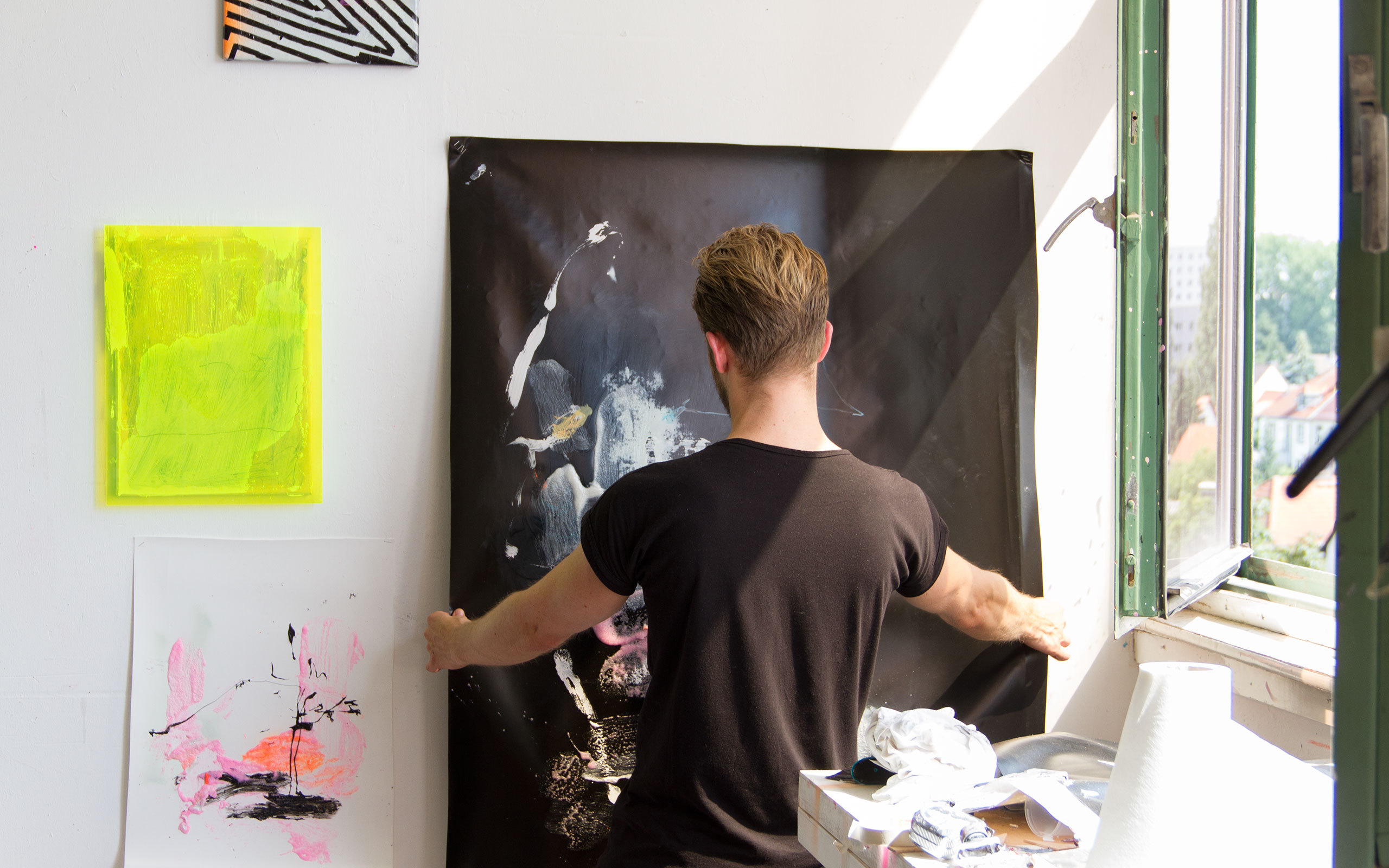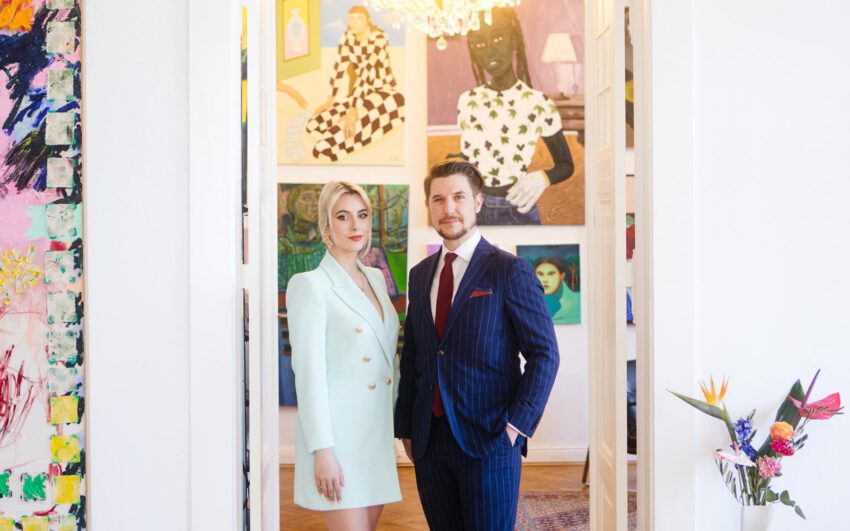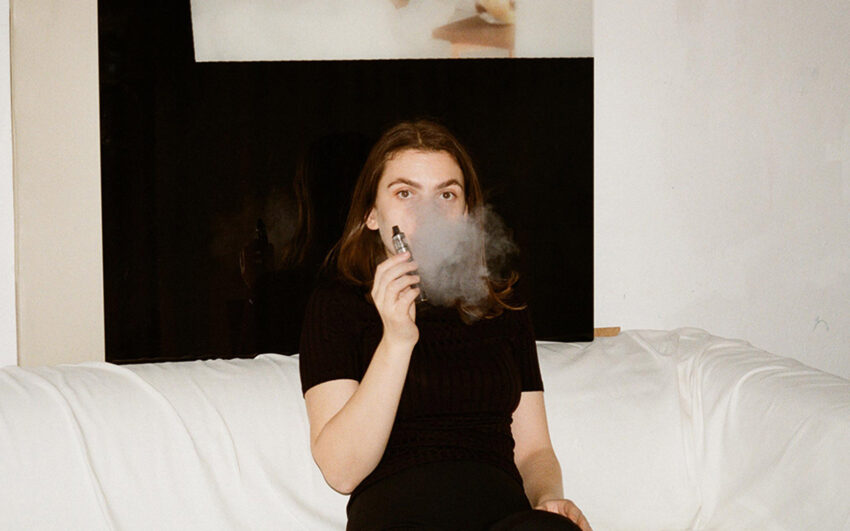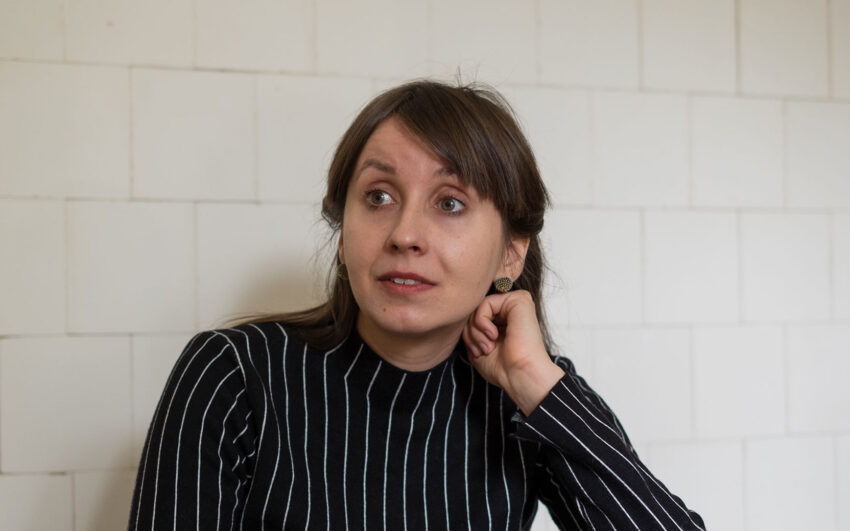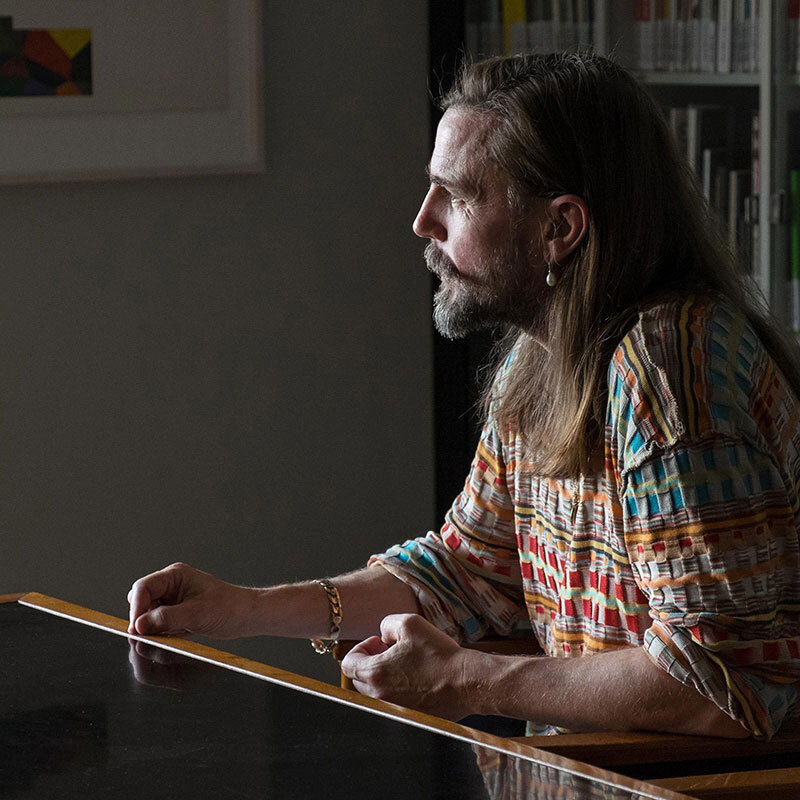The scene for contemporary art in Europe’s North is expanding and developing new dynamics as international collectors are watching the scene. With Nordic Notes we regularly cast the eye on the Nordic art and cultural scene, portraying its important actors.
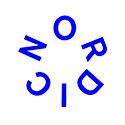
Ville Kylätasku explores existential themes both on the level of the reality we see and experience, and within the context of perceptual psychology. Painted on black or foggy sheets of hi-tech PVC, the paintings evince the artist’s fascination for different materials, textures and processes. Despite their intensive texture and plasticism they appear almost to be weightless. We met him in his studio in Berlin-Hohenschönhausen, just across from the prison complex of the former East German Communist Ministry of State Security that today is a memorial.
Ville, you found a studio space in a building that was formerly in use by the Stasi of the former GDR?
We are here at the Intelligence Department Studios, or Studios ID. Formerly this building complex was operated by the Ministry of State Security, where they developed, produced and maintained all espionage equipment for the country. Today the building houses a quite heterogeneous community of artists, designers, photographers, sculptors, and other creatives. It is quite ironic that now free-thinking minds have taken over the building and the whiff of artistic creation is now wafting through the corridors.
Can you explain to someone who may not know your practice, what you are preoccupied with in the art that you are making?
In the history of philosophy and religion, the ultimate questions of life have always been the perennial questions that recur infinitely without resolution. I am interested in those perennial questions that relate to the human condition. My art contemplates on what creates a persona, the mind, the consciousness, and its condition.
What is the crux of the issue when it comes to investigating into our existence?
The fact that we exist can be derived from a co-dependence of counterparts. For example, awareness requires materiality and sensory ability. Only in this way are reality and self-awareness explainable. Counterparts also lay in the basis of our social and moral existence. Selfhood needs otherness, individuality and identity develop through those social relations which can mirror our own being. I am looking at these counterparts that define life.
What prompted you to make metaphysical questions the subject of your art?
These days our society is so preoccupied with the superficiality of things. This shallowness is only amplified by visually driven and rapidly consumed social media such as Instagram and Facebook. I believe there is a yet unexplored space for art that talks to spiritual aspects of human existence – the meaning of life. I take a lot of interest in mythology and modern sciences. Life is a mystery that can’t be rationalized but it’s possible to sense it. So I’m concentrating on producing these emotions. I feel we need art that has the ability to touch our souls.
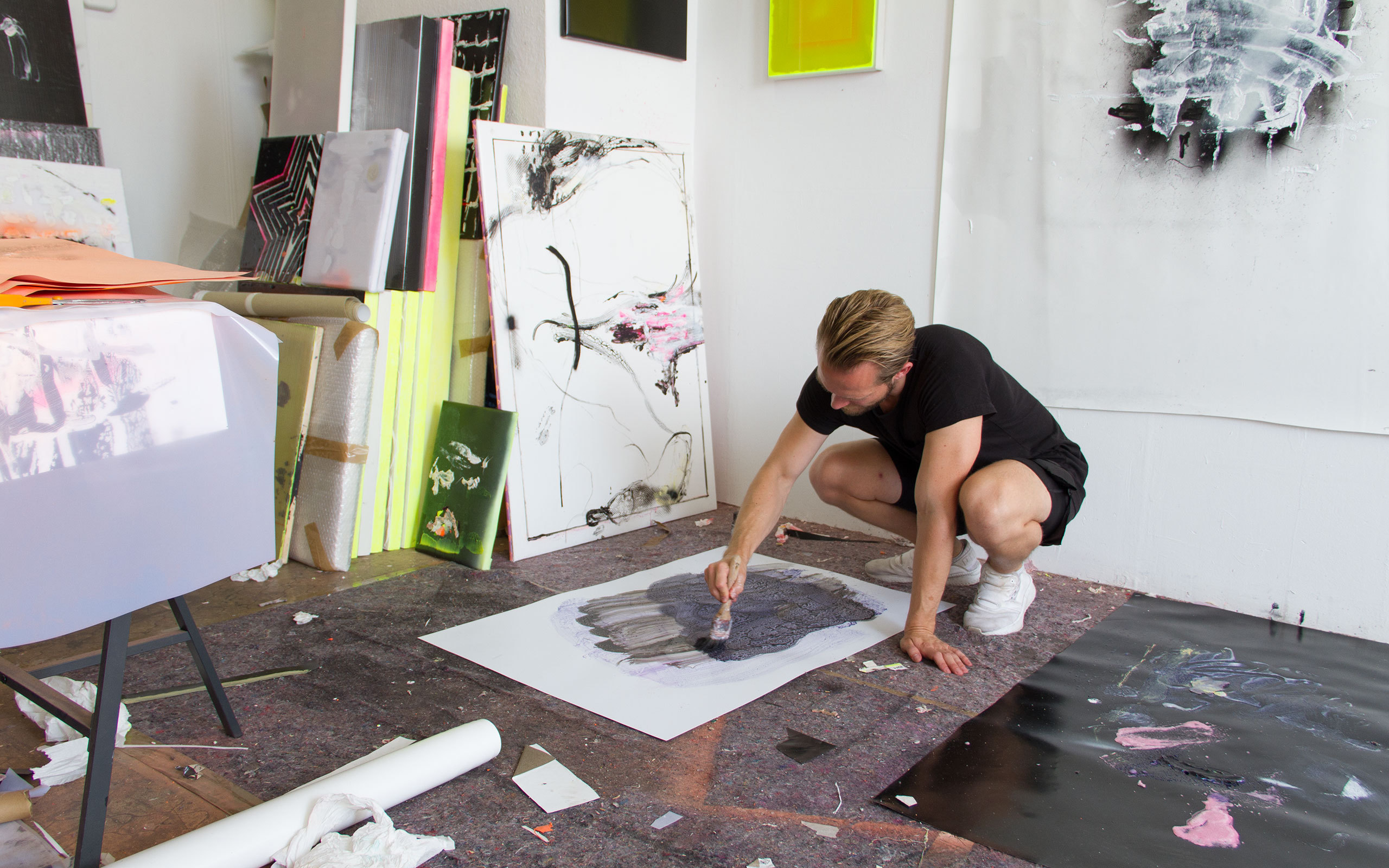
Your work is often discussed as seeking reference to the Renaissance period. On which levels do you draw a connection?
During the Renaissance period the painters were driven by similar motifs as the ones we have just been talking about. It was a time during which a new self-awareness took form, and when society, science, philosophy, and the arts developed a heightened interest in the qualities of the human spirit. In painting this translated into a desire by painters to stir positive feelings among viewers of their art. A painting became more than a depiction of something. These paintings were a turning point in art history and have not lost their appeal even in the present day.
Besides pursuing similar conceptual ideas do you also draw parallels to Renaissance art on a formal level?
I do adopt certain techniques, although I apply them in a contemporary context, so they may not become apparent immediately. For example, the Renaissance masters had fantastic skills in transferring light and shadow into the medium of painting. My works also adopt the idea of light and darkness, or white and blackness, sometimes in very literal terms, for example in this painting here called We came from the Stars. In other cases I adopt these principles more metaphorically in that I use materials, which are representing opposite concepts. Also, from a technical perspective, I work in layers applying different paints or pastes and other materials such as pearls or fabric. The application of layers, and the principles of addition and subtraction, was a popular practice during the Renaissance. Before my studies in art I was educated in design, which is probably the reason why I feel very comfortable thinking in such spatial terms. I keep track of every layer and I wander back and forth across the layers in my mind.
Many of your works do indeed feel very spatial. Some seem almost like collages of matter. Is that also the designer in you?
Probably. Although I started with the conventional oil on canvas technique, which I am still using, my paintings have indeed become very plastic during the years. I have always taken an interest in new materials. As opposites or counterparts play such an important role in my work, the materials I process emphasize this kind of counterplay. You find me everywhere in Berlin’s designer and architect equipment stores, constantly searching for materials of opposing character, such as shiny and matte, solid and transparent.
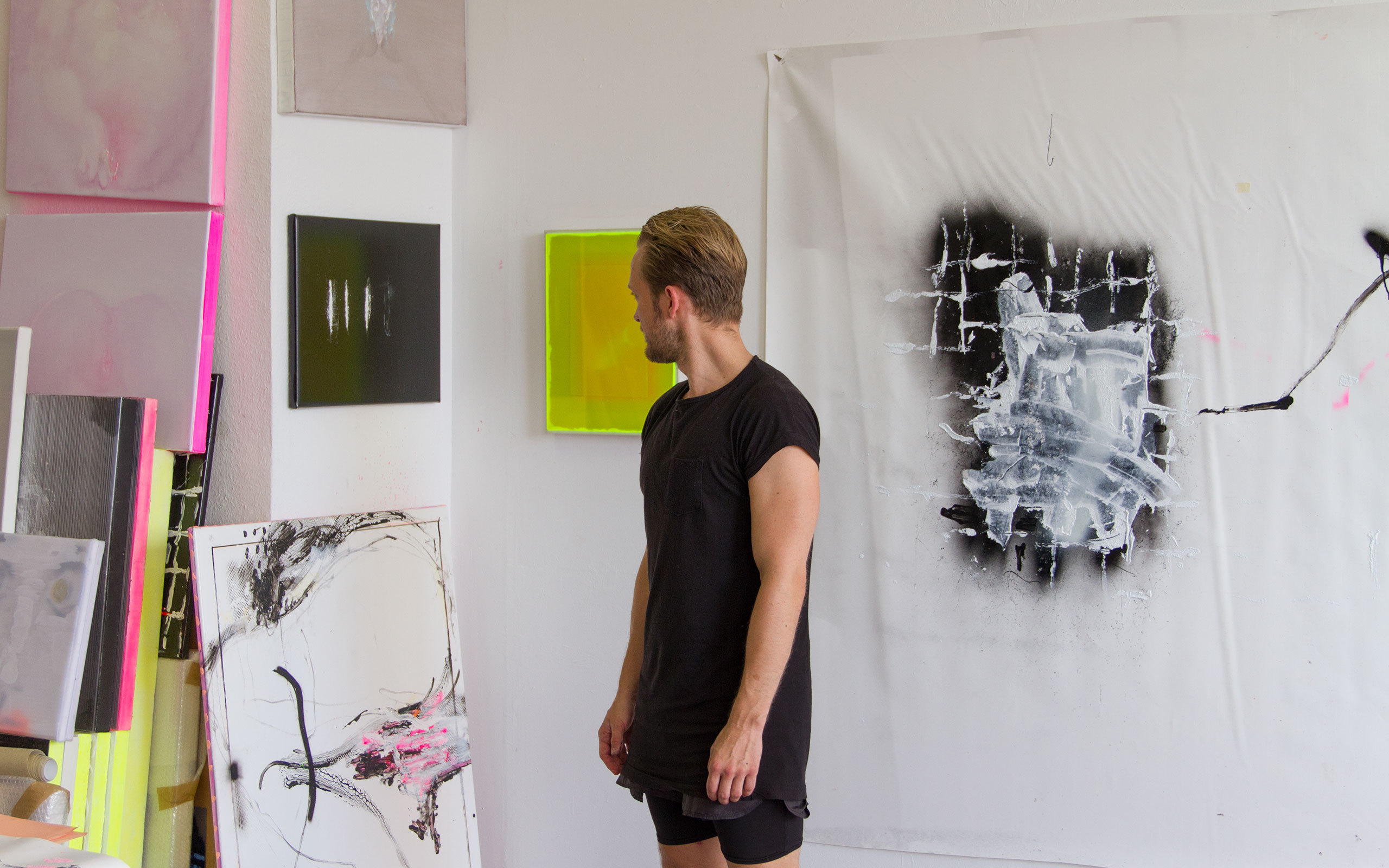
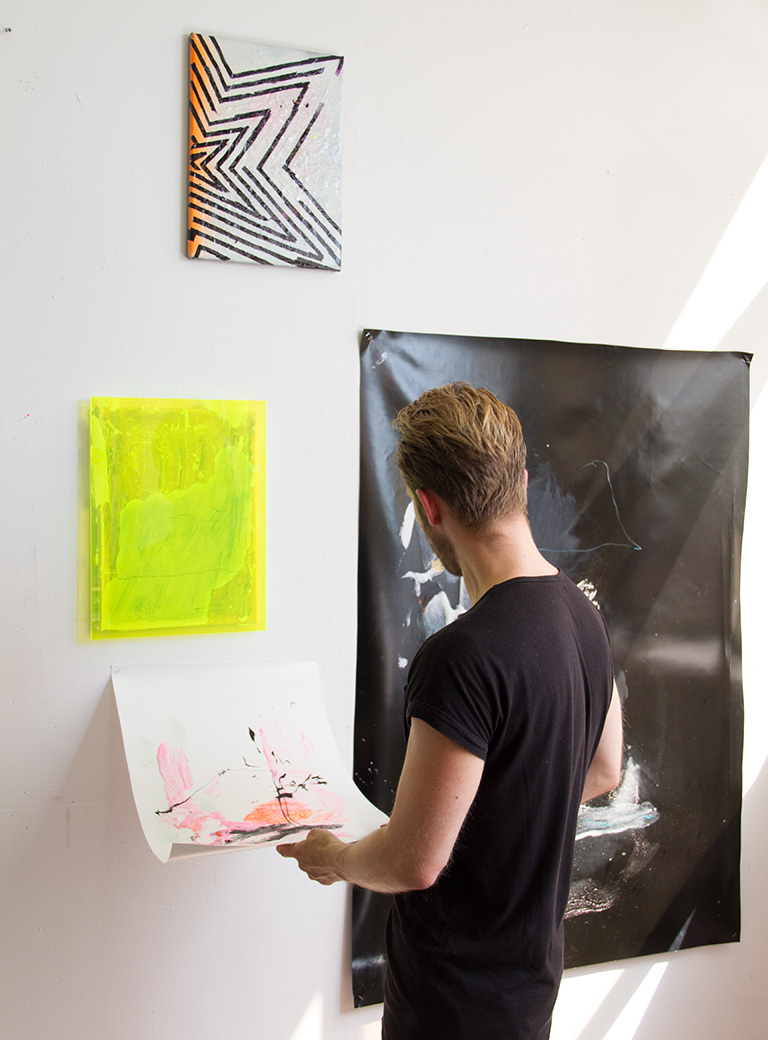
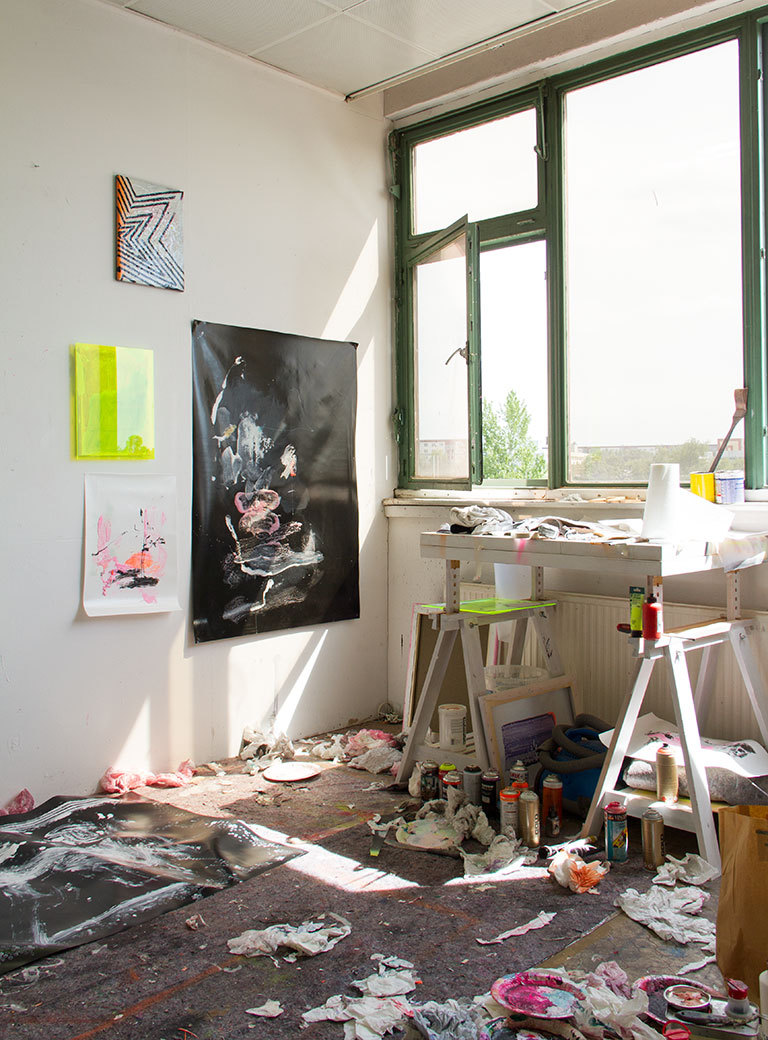
Would you talk to us about a concrete work series to understand how to read your paintings when standing in front of one?
This painting here from the Vanitas series! You may vaguely recognize a flower. A flower is commonly known to represent beauty and maybe also desire. But, imagine the flower fading, all of a sudden this speaks of the ephemeral – life and death if you will. Most of the time this desire aspect is represented in my works, often applied in a philosophical context. It is in fact what drives me in my own work. I let myself be driven by desire.
Desire is a complex concept, and includes sexual associations. In which context do you apply it for yourself?
Yes, absolutely. And the sexual aspect is also present in my works, time and again. Why desire? The thing is that we always seem to be lacking something or feeling incomplete. Even religion teaches us that we are guilty, imperfect, undeserving. As a society we are caged by this sense of incompleteness. To escape it we are trying to get attention and approval from others, we want to find as many sex partners as possible, and of course we seek salvation in consumerism. But any kind of desire that is directed towards matter can never be sustainable.
But what does the flower in “Vanitas” do differently?
The flower turns to the sun. It’s a form of desire in philosophical terms – it has a desire to grow, to exist, to survive. It is a desire that comes from within. Such intrinsic desire is a fulfillment in itself. It is a more profound and a more enduring process
Can I just say that your choice of colors and materials is very unusual for a male artist.
Yes I know. They are not the normal “guy” kind of colors. (laughs) Most of the time I paint in a very “fleshy” way, wherein I may apply lots of tones of red and orange, and very often I add pink or violet. My choice of colors and materials provoke a lot of people. Lots of people hate pink. But I don’t care. It is not about pleasing, but I like to seduce. To counteract these soft and sometimes Barbie-like colors, I work with black, or sometimes I exaggerate it with shiny, glossy stuff.
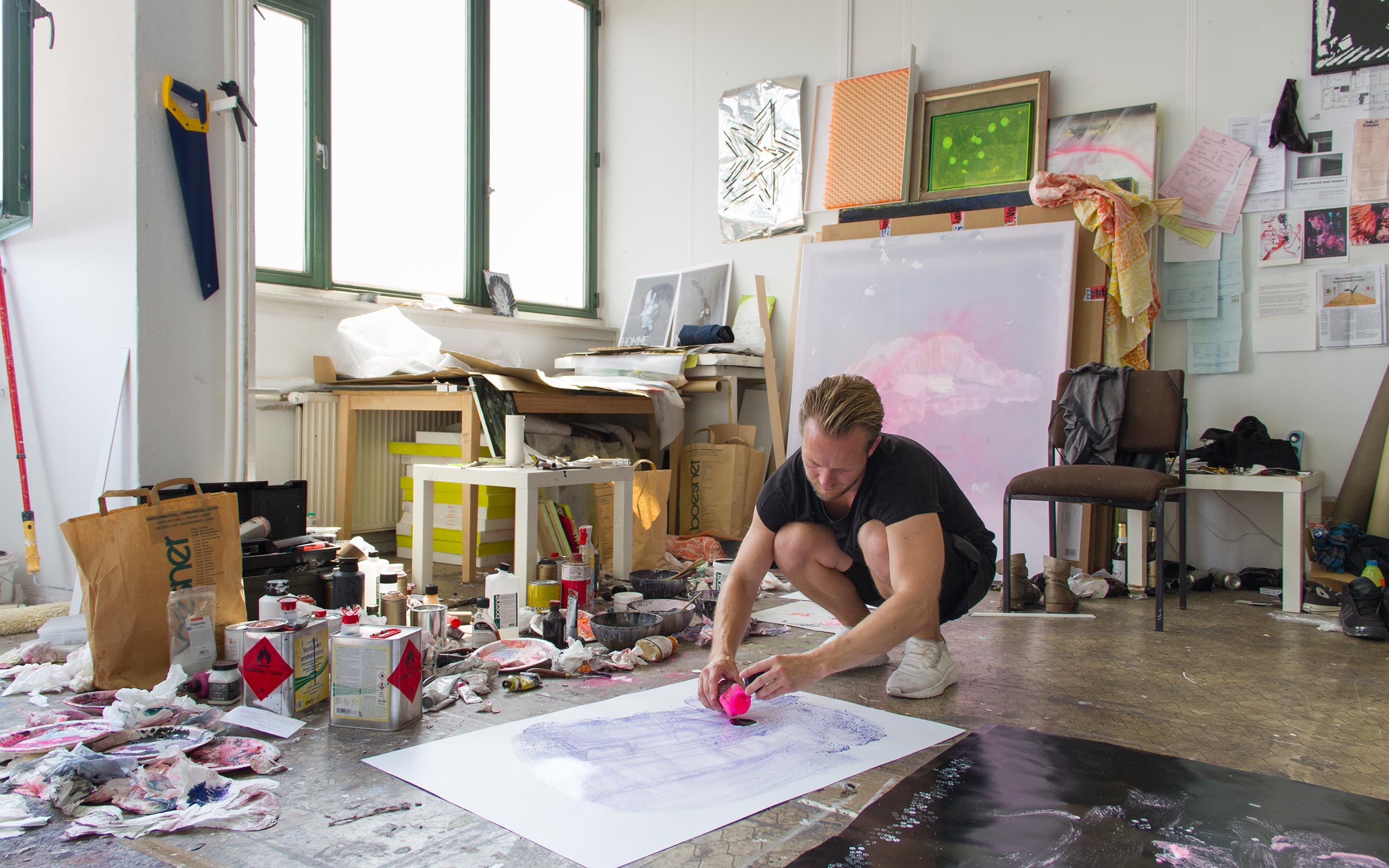
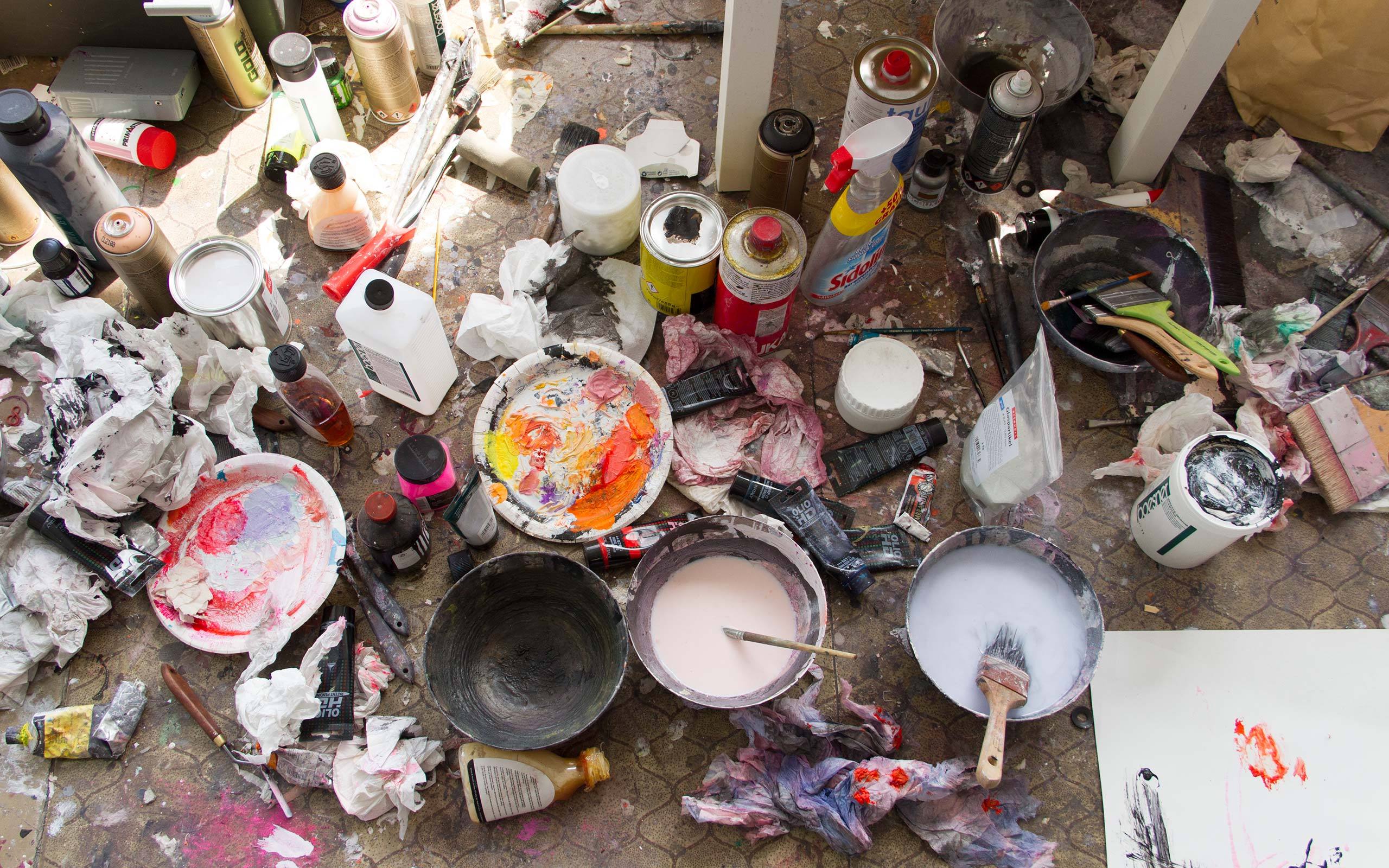
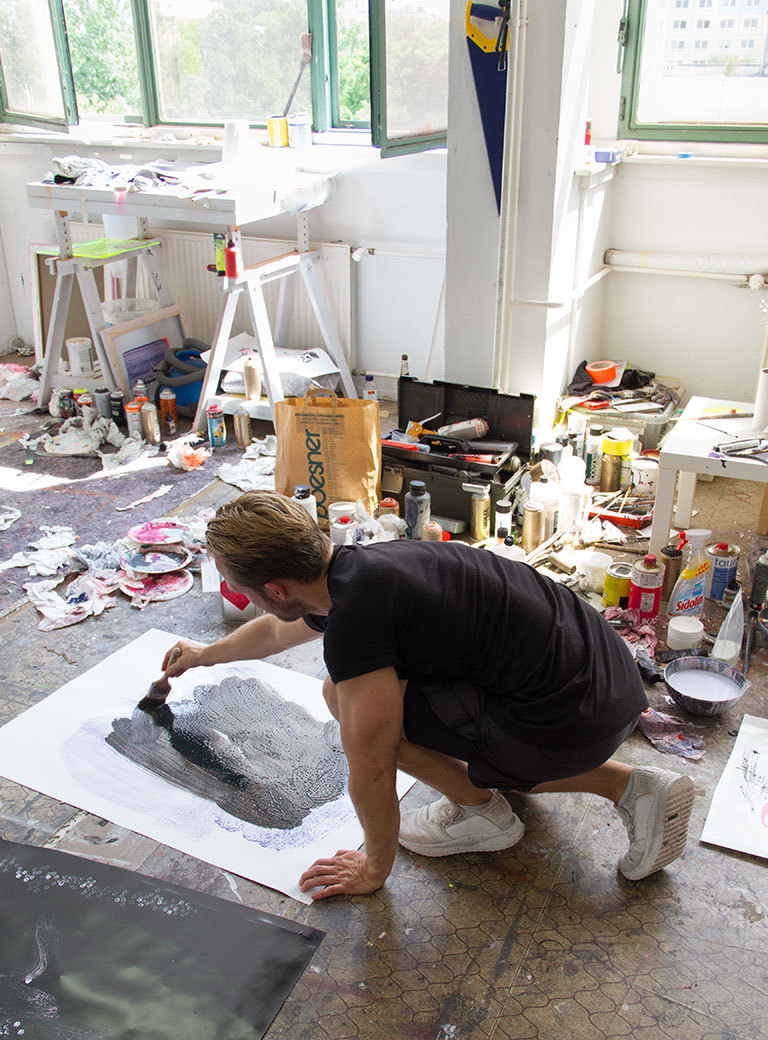
How do you get started on a new piece of work?
Most of the time I start paintings with liquid color, so the applied color becomes almost transparent. Instead of canvas I use PVC sheets, on which the paint absorbs less quickly, so I can influence it longer during the process. Because of this technique I have to place the sheet on the floor to prevent the paint from dripping. You see, just like this… (crouches to paint on a fresh sheet on the floor)
Watching you paint it all looks very playful and impulsive. Is there an unspoken plan as the painting takes shape?
To some extent my way of working is very intuitive and, yes, impulsive. During the process I follow my desire. Working with PVC sheets supports me in this approach, as the material is more forgiving than canvas – one does not have to be so deliberate with every move, and this way I am able to sit back and contemplate for a while on what the next step should be. It’s an interplay between impulse and reflection, maybe best described as “controlled impulse.” Everything starts in mystery, and ends in mystery. Like life itself!
As your works are quite abstract, and to some degree you let yourself be guided by impulse, when are you convinced that a work is finished?
It’s a gut feeling that I cannot express. Having said that, I try to abandon my works when they are 70 or 80 percent ready. I look at them more as foundations for paintings, that I will return to and finish in the future. For example, this painting that I have just been working on here with you, I may put it to the side, maybe even for as long as 2 years, until I feel a need for it. When I am planning an exhibition and am in need, for example for a more masculine or dark painting, I scour my storage until I come across the right one. Only then I finish the work. My works are part of a continuum and they congregate in different constellations. People who visit my studio and look at my works randomly placed around here often don’t understand what it is that I am doing – until they see the works placed in an exhibition context.
What happens with your paintings in an exhibition setting?
In my exhibitions, I am trying to create the same dramaturgy of attraction and repulsion of opposites as is present in my work. How exactly an exhibition comes together I can’t put into words. There is never a concrete concept or schedule. I start with an intuition, and the closer I get to the exhibition date it takes shape, as I discover how certain works have something in common or how they repel each other. Every work represents a kind of gesture, constructed by such considerations as light and darkness, happiness, linearity, masculinity or femininity. Once put into relationship with one another, the works become interwoven on an immaterial level, unfolding a narrative. If you spend enough time in an exhibition of mine, you will perceive this fabric of disruption, counteraction and tension. I am looking to create a presentation that demands involvement and creates a more enduring momentum that goes beyond flash. To present fifteen very similarly looking works would feel to me like fastfood.
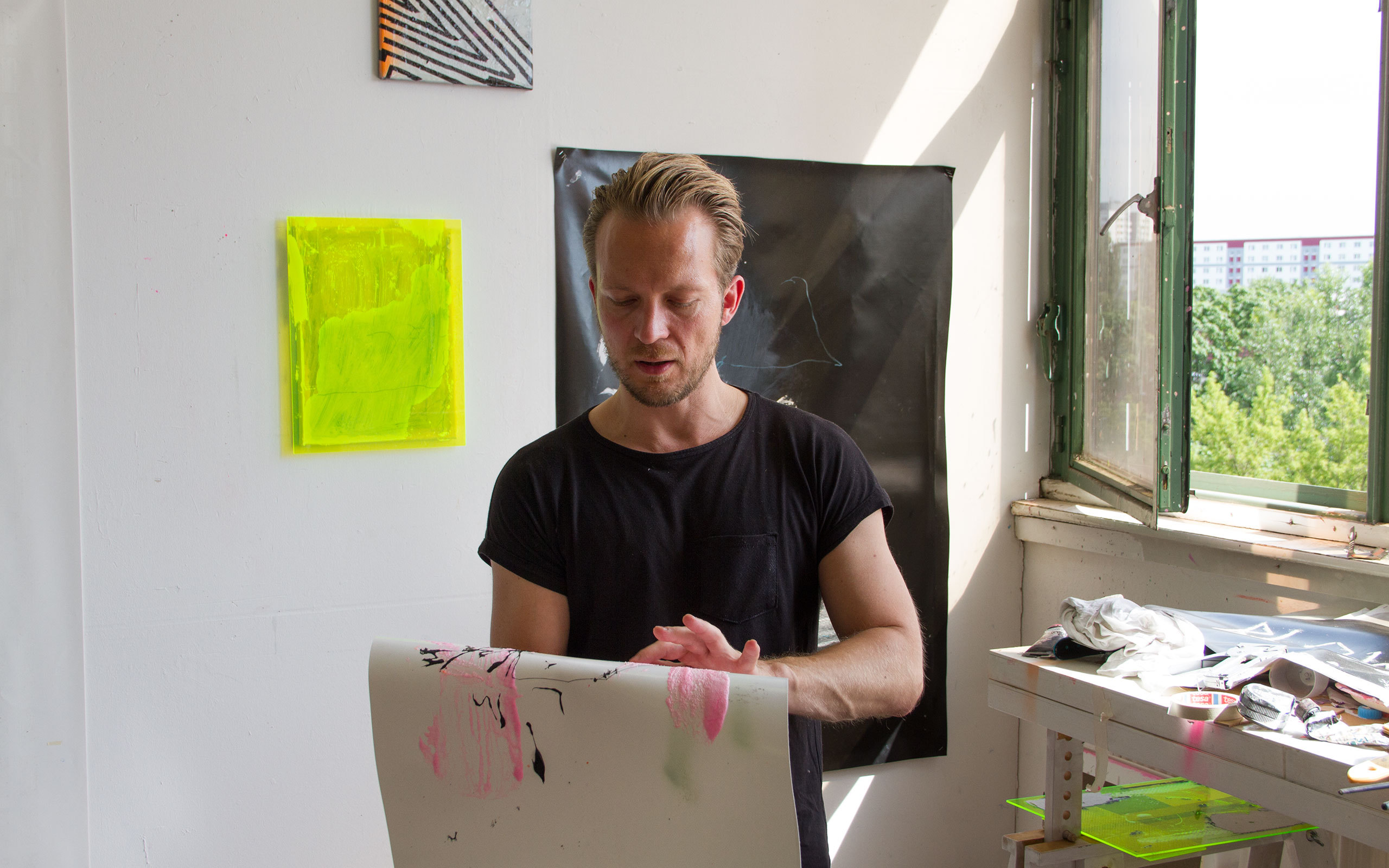
You mentioned that you were always in search of new materials. Is this an urge for constant renewal of your practice?
I do it mainly to keep the desire and personal interest in me awake for the art that I am making. Studying new materials helps me develop my practice with an open end. For example, a while ago, I started working more with transparent materials. It’s tangible but etheric – it is not a material experience, but without the matter it would be impossible to experience. Metaphysically speaking that’s also the meaning of life itself: to understand ideas through physical experience. I also like the kind of techno feel of these neon plates. I always felt attracted to techno music. In the 1990s, but I was of course too young to go to clubs. But since moving to Berlin in 2012 I have become quite interested in techno and house music, and happen to play it a lot in my studio when working.
What was the reason for coming to Berlin anyhow?
You know, Tampere, my home town in Finland, is a small world. Even when I studied in Lahti and then in Helsinki at the Free Arts School, I always felt kind of shut in. I am more the big city type, and I wanted to go to greater lengths in my artistic development. Berlin just felt right. It is one of the world’s artistic centers, and it is also geographically very much centered in Europe. From here I am able to keep ties with my gallery, Galerie Forsblom in Helsinki, who now also have a Stockholm branch, and of course to Galerie Russi Klenner, my gallery here in Berlin. And it is easy to reach out to people in other parts of Europe and enter in all kinds of collaborations, as I did recently in the project space of Galerie Lisa Kandlhofer in Vienna.
Is there anything you feel attached to from your home country Finland?
I really appreciate the way we can see beauty in the simple things. Finland has a rich yet very simple natural landscape, and that is also reflected in our culture of minimalism in many aspects of life, including design. I cherish the idea of reduction, but at the same time I have a desire for richness in colors and materials. I feel both ideas are carried forward into my work.
How did you decide on creating art for a living?
The motivation to make art is always a very personal one. I can best express it by saying that I always felt more compelled to find things, than to be in search of things, which probably has to do with my desire to be driven by intuition and impulse. I felt that I was drawn to art at the age of twenty. But it took some time until I had the courage to visualize it as my profession.
Can you speak yet about your upcoming exhibition at Galerie Forsblom in Helsinki this fall?
I will show paintings done on different PVCs, mostly on black and white, framed with neon plexiglass. Together with the viewers perception, these paintings create an energetic, ever continuing battle of life. Thematically these mostly abstract, vivid and colorful paintings pursue philosophical questions of life which relate to one’s own identity and place in life.
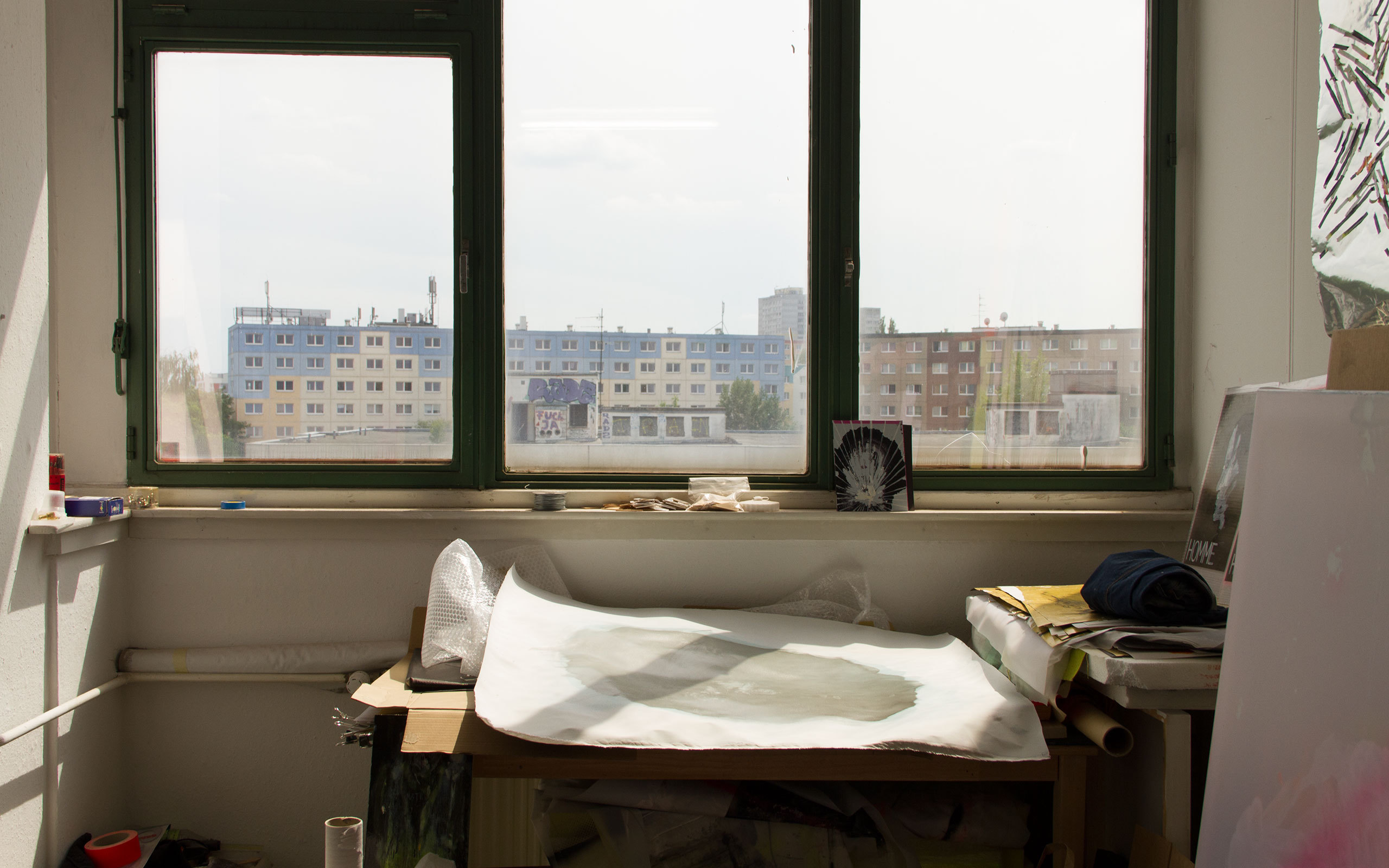
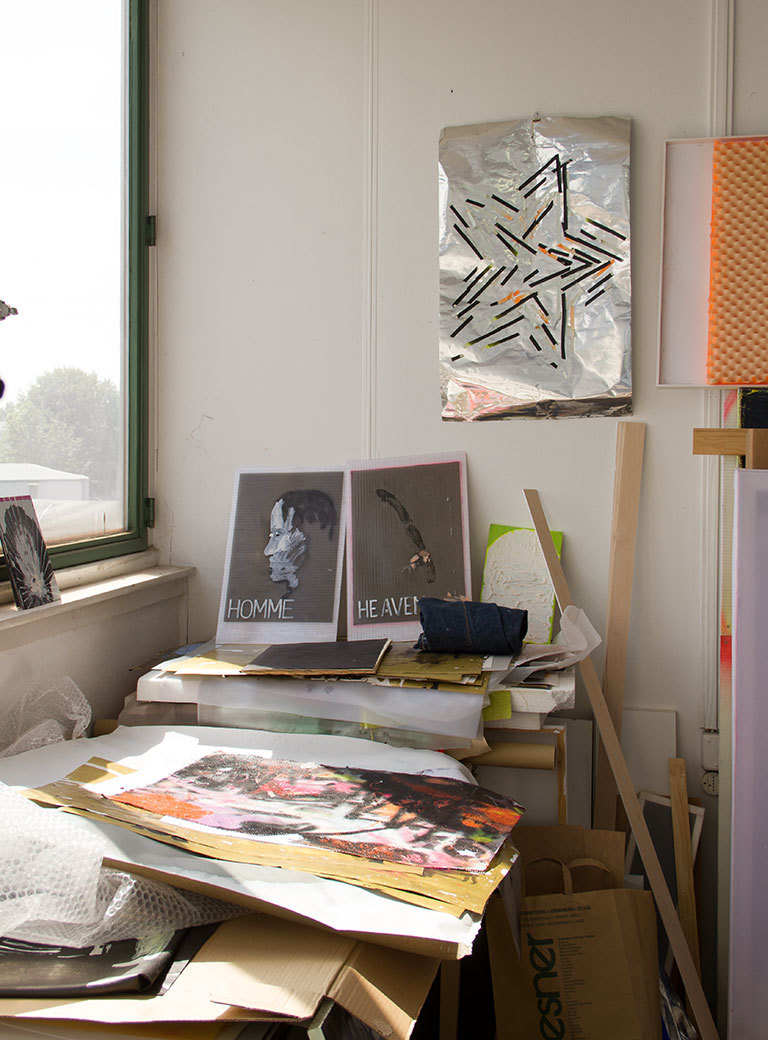
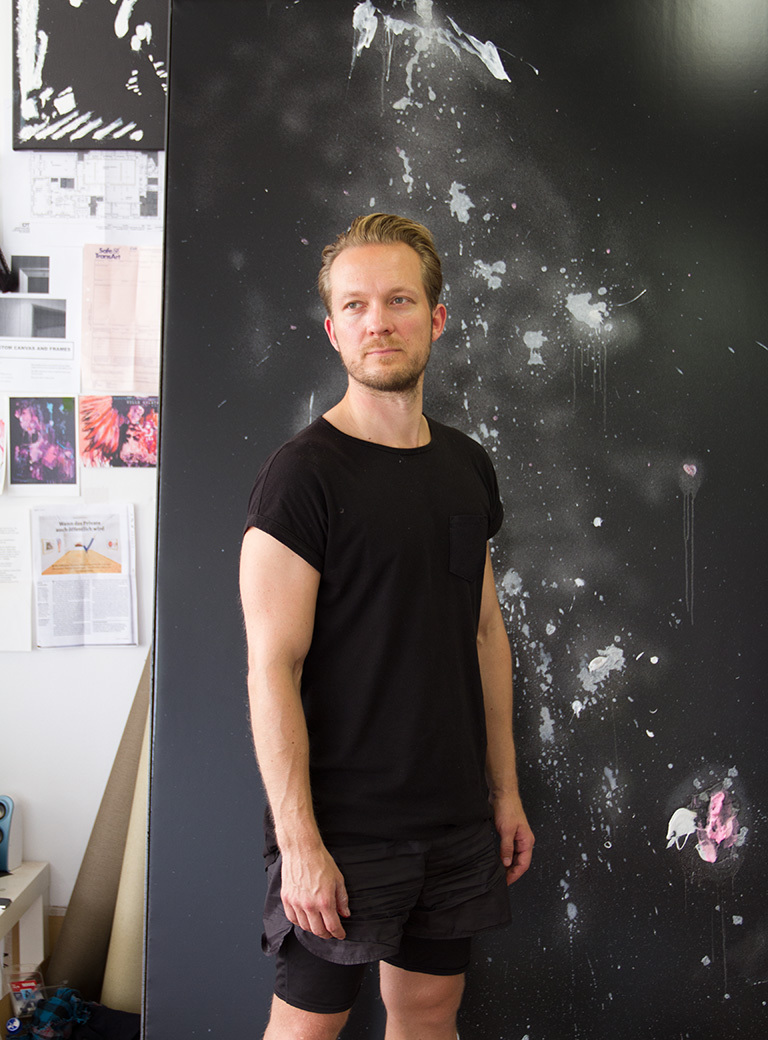
Interview: Florian Langhammer
Photos: Florian Langhammer


